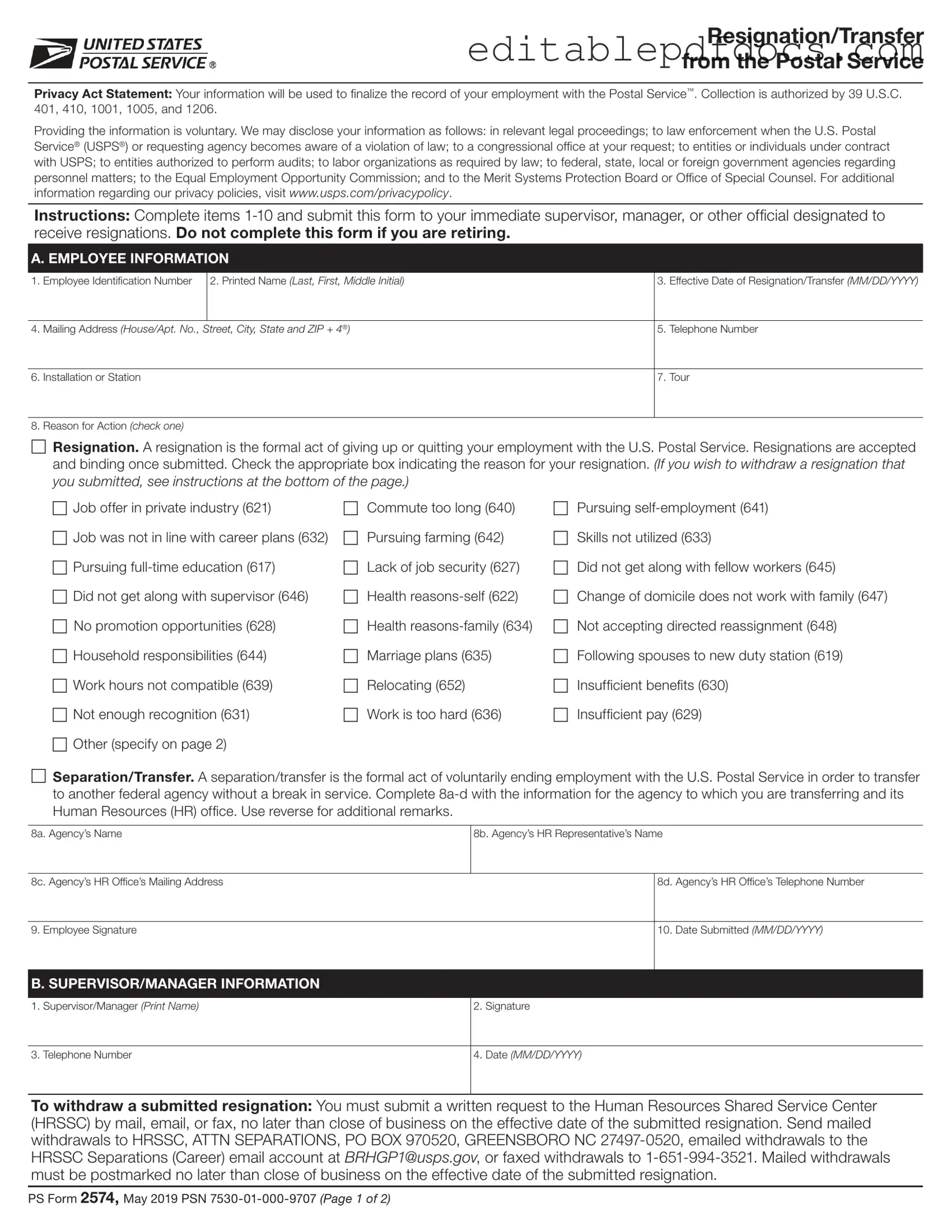Filling out the USPS Resignation form can be straightforward, but many people make common mistakes that can lead to delays or complications. One frequent error is not providing the Employee Identification Number. This number is essential for identifying your employment record and ensuring that your resignation is processed correctly. Without it, your form may be incomplete and could result in unnecessary follow-up.
Another common mistake is failing to clearly print your name in the designated section. It’s important to include your Last, First, and Middle Initial as it appears in your official records. If there’s any discrepancy, it may cause confusion and delay in processing your resignation.
Many individuals also overlook the Effective Date of Resignation. This date is critical, as it indicates when your resignation will take effect. Not specifying this correctly can lead to misunderstandings regarding your final working day, which can impact both you and your employer.
Providing an incomplete or incorrect Mailing Address is another frequent issue. Make sure to include your complete address, including your house or apartment number, street, city, state, and ZIP code. This information is necessary for any correspondence related to your resignation, and missing details can result in delays.
Additionally, many people forget to check the appropriate box for their reason for resignation. This step is crucial, as it helps the USPS understand your situation and may assist them in improving working conditions. Each reason has a specific code that needs to be marked clearly.
Another oversight is neglecting to sign the form. Your signature is a confirmation of your intent to resign and must be included for the resignation to be valid. Without your signature, the form cannot be processed, and you may remain on the payroll unintentionally.
Some individuals also fail to provide a contact number. Including a telephone number allows HR to reach you easily if there are any questions or issues regarding your resignation. This small detail can save a lot of time and confusion later on.
Lastly, not submitting the form to the correct person can cause significant delays. Ensure that you hand over the resignation form to your immediate supervisor or the designated official. Submitting it to the wrong person may lead to it being misplaced or not processed in a timely manner.
By being mindful of these common mistakes, you can ensure that your resignation process goes smoothly. Taking the time to carefully complete the USPS Resignation form will help you transition out of your position with ease and clarity.
